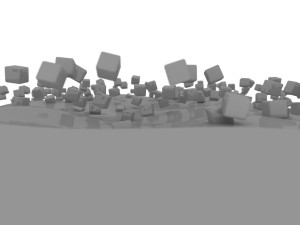Since I couldn’t find a good beginners guide to c-Si metallization paste, (not even from Wikipedia) I thought I’d provide an explanation of this important module assembly material:
The silicon solar cell has a low-temperature glass-frit paste applied to the active surface. This combination of glass, Ag, and other binder materials is printed onto the solar cell and fired around 850-1000degC to form the solderable metallization on the cell. This glass-silver mixture recombines during the firing process to break through the passivation/antireflective coating layer on the cell and form a strong bond to the cell. During firing the glass and silver are suspended in a mixture with silver forming an electrically conductive path from the top to the bottom of the deposit – and ideally a silver-rich layer is formed on top. This silver is the surface that tabbing ribbon is soldered onto when interconnecting cells.
Because the structure of the glass-silver is formed in the firing process, the firing can impact the solderability of the final metallization. That is the reason it is so important to determine the bond strength and diffusion/intermetallic formation of the interface between the cell metallization and tabbing ribbon solder coating.
Now here’s my challenge to you:
If you know of another good description, post a link to the document in the comments field below!
Thanks,
~Jim H.


